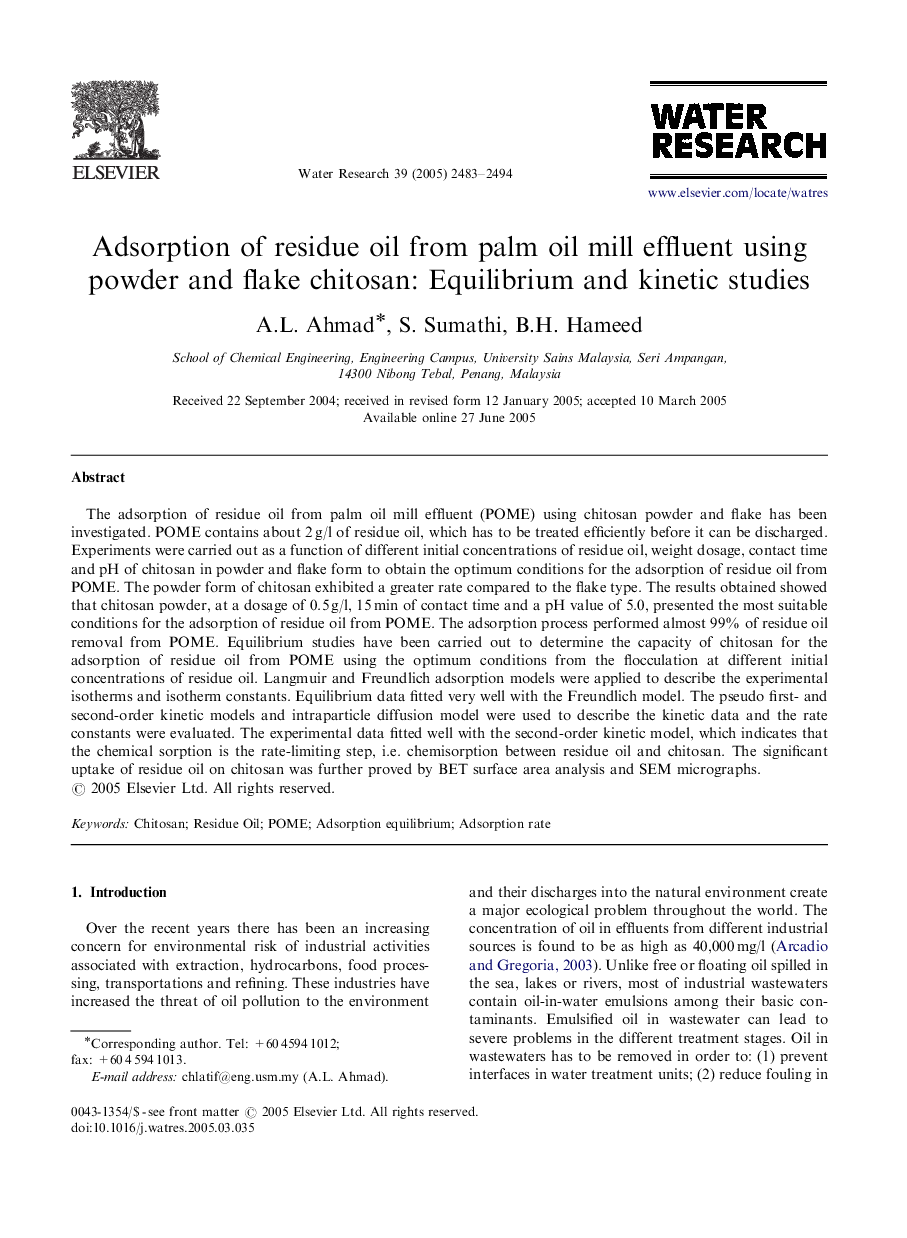| Article ID | Journal | Published Year | Pages | File Type |
|---|---|---|---|---|
| 4486245 | Water Research | 2005 | 12 Pages |
The adsorption of residue oil from palm oil mill effluent (POME) using chitosan powder and flake has been investigated. POME contains about 2 g/l of residue oil, which has to be treated efficiently before it can be discharged. Experiments were carried out as a function of different initial concentrations of residue oil, weight dosage, contact time and pH of chitosan in powder and flake form to obtain the optimum conditions for the adsorption of residue oil from POME. The powder form of chitosan exhibited a greater rate compared to the flake type. The results obtained showed that chitosan powder, at a dosage of 0.5 g/l, 15 min of contact time and a pH value of 5.0, presented the most suitable conditions for the adsorption of residue oil from POME. The adsorption process performed almost 99% of residue oil removal from POME. Equilibrium studies have been carried out to determine the capacity of chitosan for the adsorption of residue oil from POME using the optimum conditions from the flocculation at different initial concentrations of residue oil. Langmuir and Freundlich adsorption models were applied to describe the experimental isotherms and isotherm constants. Equilibrium data fitted very well with the Freundlich model. The pseudo first- and second-order kinetic models and intraparticle diffusion model were used to describe the kinetic data and the rate constants were evaluated. The experimental data fitted well with the second-order kinetic model, which indicates that the chemical sorption is the rate-limiting step, i.e. chemisorption between residue oil and chitosan. The significant uptake of residue oil on chitosan was further proved by BET surface area analysis and SEM micrographs.
